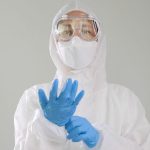
While researchers continue to try to find the key that unlocks the cause of Parkinson’s disease, new research suggests that what a person eats could make a difference. Researchers in Canada found a strong correlation between eating either a Mediterranean diet or the MIND diet (which combines elements of the Mediterranean diet and a diet known as Dietary Approaches to Stop Hypertension), and a delay in onset of Parkinson’s disease. “Sticking really closely to these diets, both the MIND and the Mediterranean diet, coincided with a later onset of Parkinson’s disease,” said Avril Metcalfe-Roach, a graduate student at the University of British Columbia, in Vancouver. “For women, that was actually up to 17.4 years when they adhered really closely to the MIND diet and for men it was about eight years.” The study, published online recently in the journal Movement Disorders, offers a glimmer of hope because there’s a lack of medications to prevent or delay Parkinson’s disease, the researchers noted. Metcalfe-Roach acknowledged that the study has limitations. It asked the 167 study participants what they ate after they were diagnosed with Parkinson’s disease, and presumed those were eating habits they had maintained for some time. “That is a limitation of our study. We don’t really know how long they have been on those diets, but ideally for neurodegenerative diseases and your health in general,… read on > read on >

















